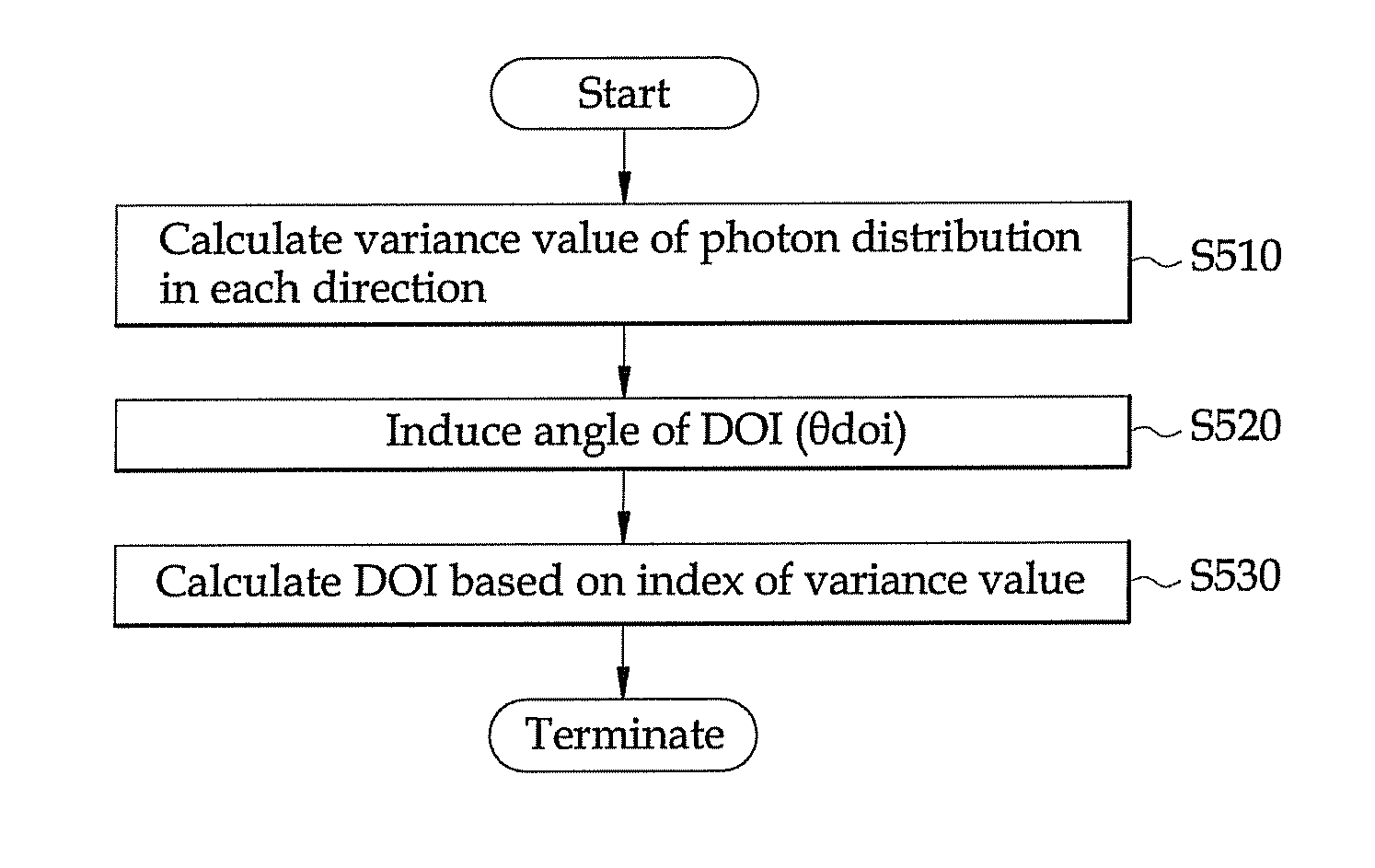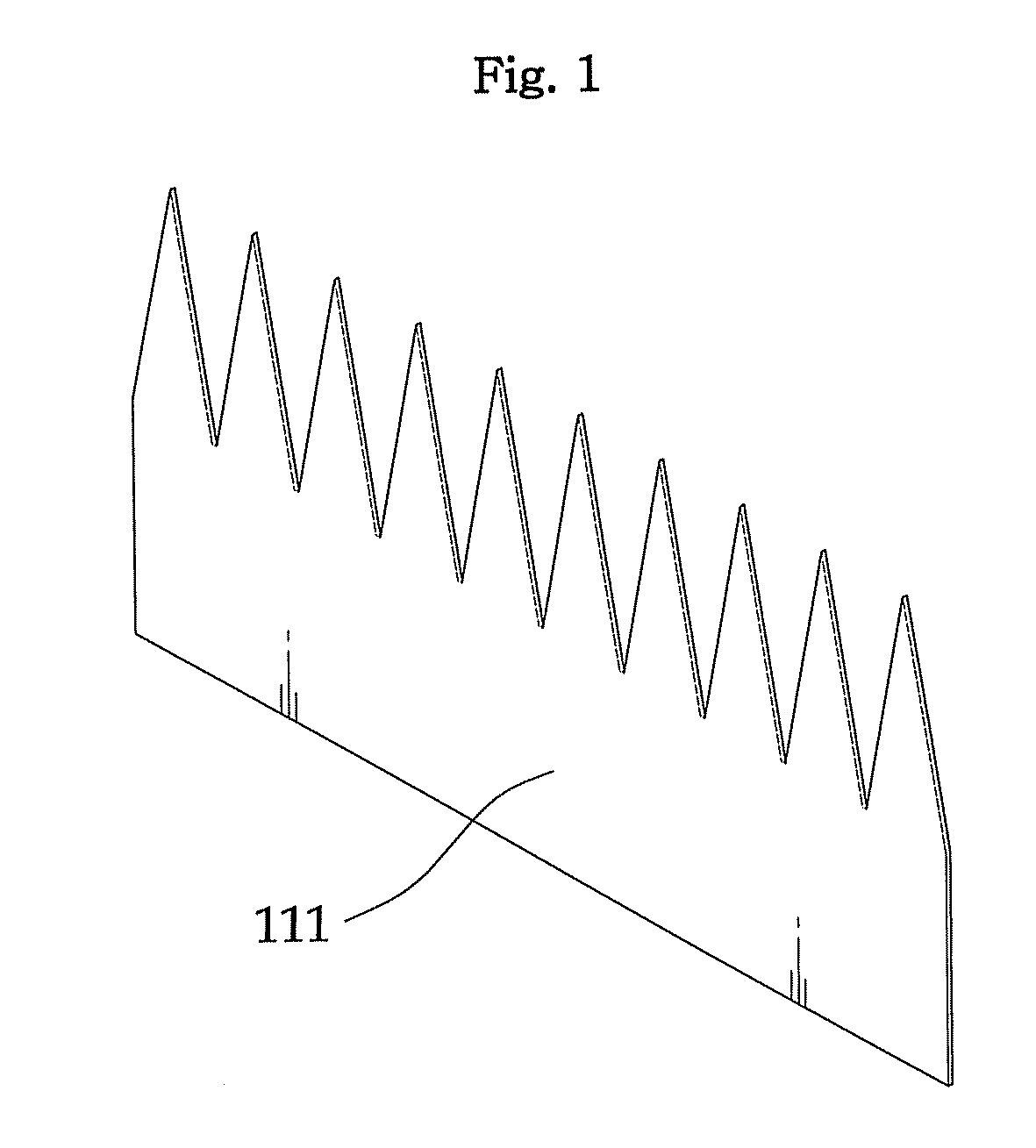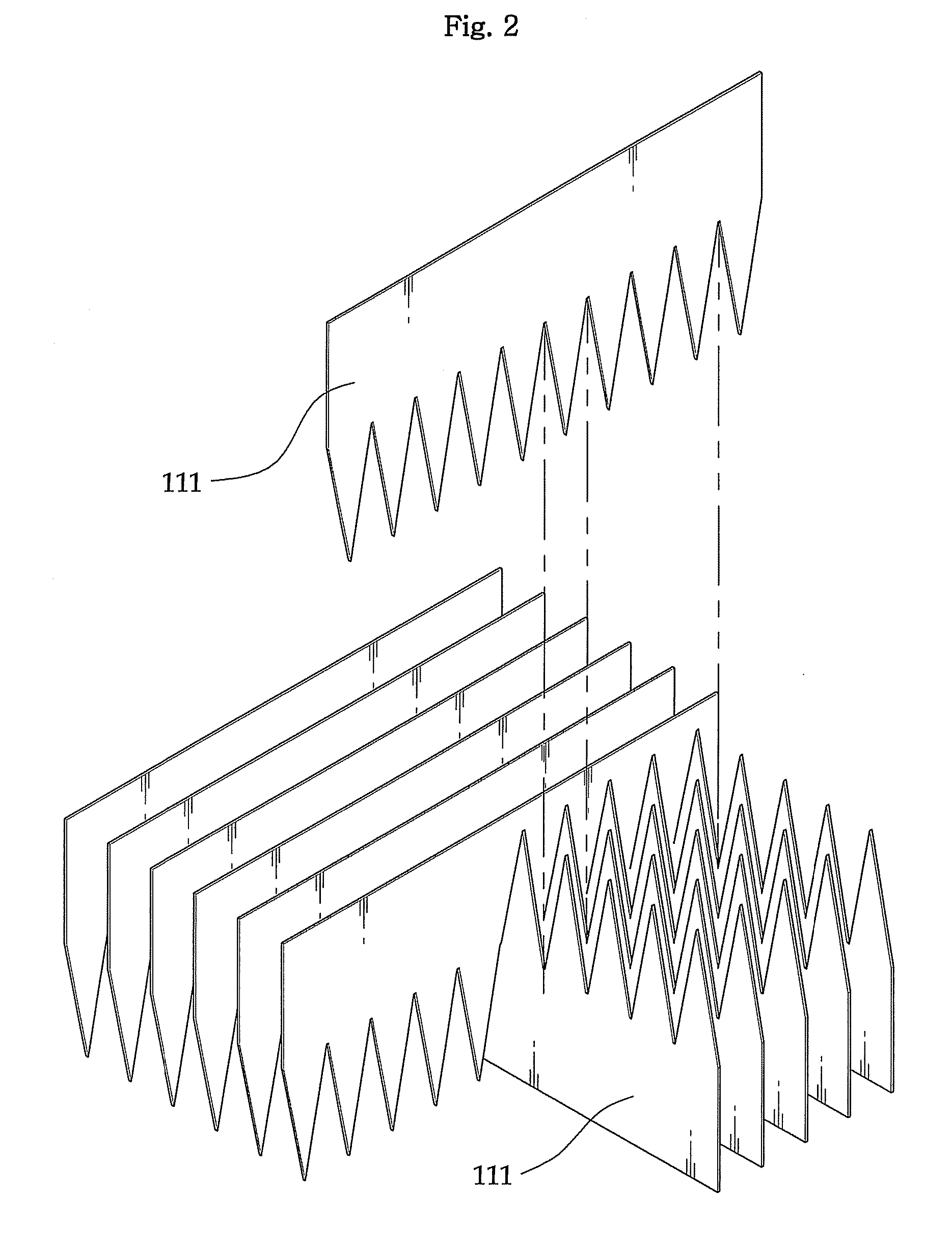Apparatus and method for measuring depth-of-interaction using light dispersion and positron emission tomography using the same
- Summary
- Abstract
- Description
- Claims
- Application Information
AI Technical Summary
Benefits of technology
Problems solved by technology
Method used
Image
Examples
first embodiment
[0094]A method of measuring a DOI according to the first embodiment is described below. The method is described below with reference to FIG. 4.
[0095]The reflective films are inserted into and attached to the rectangular parallelepiped crystals 110. Here, one direction is assumed to be an x axis, and the triangular tooth films 111 oriented toward the upper part are attached to the rectangular parallelepiped crystals 110. The other direction at a right angle to the one direction is assumed to be a y axis, and the triangular tooth films 111 oriented toward the lower part are attached to the rectangular parallelepiped crystals 110.
[0096]Scintillation light generated at a position having a shallow DOI (that is, from an upper portion distant from the position-sensitive PMT 20) is spread only in the y-axis direction, and so the number of photons detected in the x-axis direction will be small. Accordingly, the method of measuring an unknown DOI in accordance with such a principle is perform...
second embodiment
[0108]A method of measuring a DOI according to the second embodiment is described below. The method is described with reference to FIG. 7. The reflective films are inserted into and attached to the rectangular parallelepiped crystals 110. One direction is assumed to be an x axis, and the gradient films 112 having a transparent top surface are attached to the rectangular parallelepiped crystals 110. The other direction at a right angle to the one direction is assumed to be a y axis, and the gradient films 112 having a transparent bottom surface are attached to the rectangular parallelepiped crystals 110.
[0109]Scintillation light generated at a position having a shallow DOI (that is, from an upper portion distant from the position-sensitive PMT 20) is spread only in the y-axis direction, and so the number of photons detected in the x-axis direction will be small. To the contrary, scintillation light generated at a position having a deep DOI (that is, from a lower portion close to the ...
third embodiment
[0110]A method of measuring a DOI according to the third embodiment is described below. The method is described with reference to FIG. 10. The reflective films are inserted into and attached to the triangle pole-shaped crystal 120, and an angle formed by the reflective films is 60°.
[0111]When scintillation light is generated, a large number of photons are detected at positions having a shallow DOI along the diamond-shaped films 123, a large number of photons are detected at positions having a DOI half the length of the crystals along the triangular films 121, and a large number of photons are detected at positions having a deep DOI along the diamond-shaped films 123. Accordingly, the method of measuring an unknown DOI in accordance with the principle is the same as that of the first embodiment.
[0112]As described above, the present invention has an advantage in that it can improve and maintain the spatial resolution through the arrangement of the reflective films, while using the cry...
PUM
 Login to View More
Login to View More Abstract
Description
Claims
Application Information
 Login to View More
Login to View More - R&D
- Intellectual Property
- Life Sciences
- Materials
- Tech Scout
- Unparalleled Data Quality
- Higher Quality Content
- 60% Fewer Hallucinations
Browse by: Latest US Patents, China's latest patents, Technical Efficacy Thesaurus, Application Domain, Technology Topic, Popular Technical Reports.
© 2025 PatSnap. All rights reserved.Legal|Privacy policy|Modern Slavery Act Transparency Statement|Sitemap|About US| Contact US: help@patsnap.com



